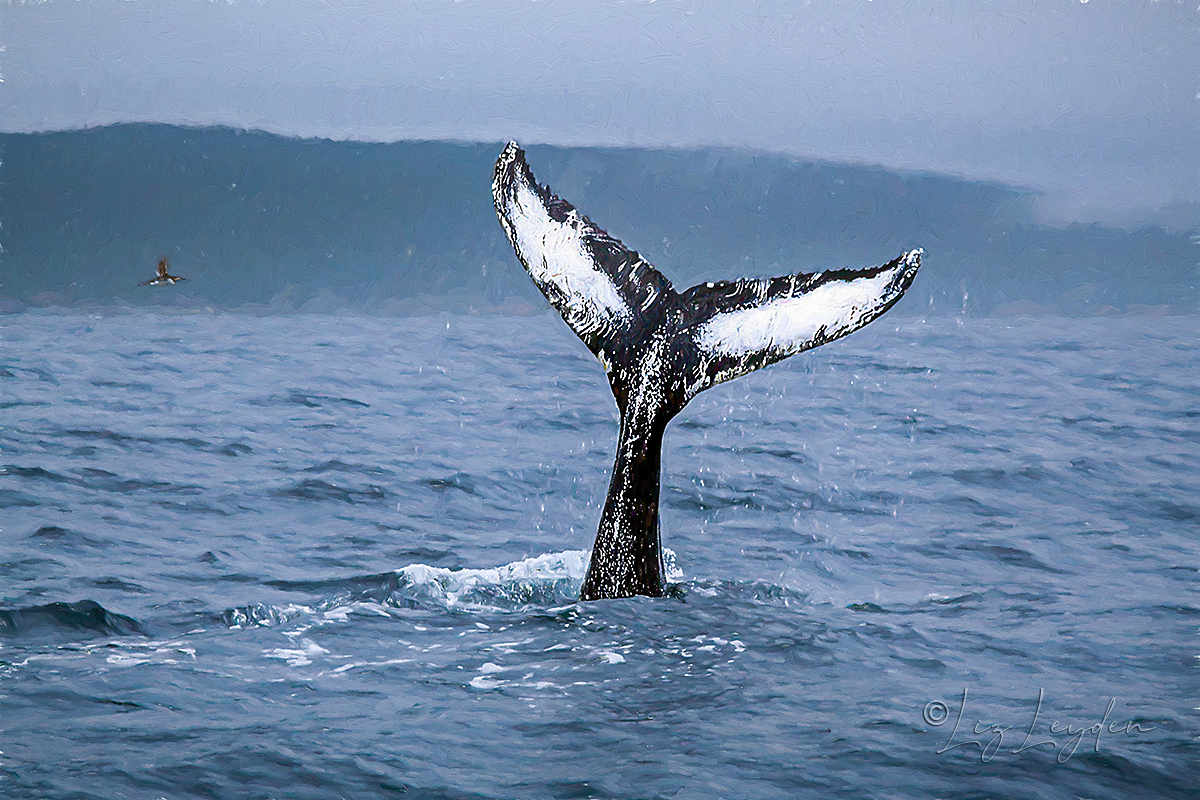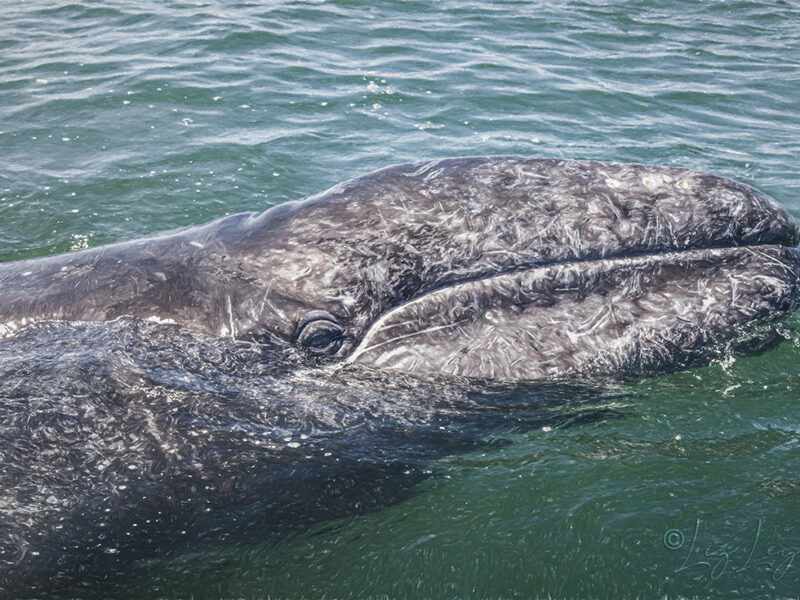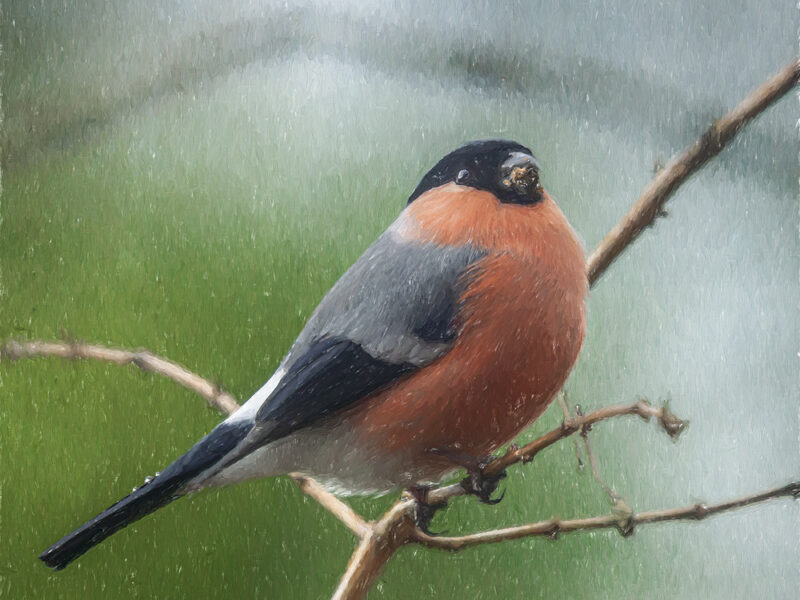A Humpback Whale, Megaptera novaeangliae, deep dives, raising its tail fluke high out of the water, revealing damage inflicted by Orca toothmarks. Witless bay, Newfoundland.
Every Humpback Whale has its own distinctive tail fluke pattern, like a fingerprint, meaning that they can all be individually recognised. There are databased catalogues of the ventral patterns of Humpback tails, meaning that their movements and other information can be recorded.
The world’s largest population of humpback whales returns to the coast of Newfoundland and Labrador each year to feed on capelin, krill, and squid. They spend the months from April to November feeding in these cold waters, then winter in the Caribbean, where they give birth. I was very lucky when I visited Newfoundland in early July 2008, as my visit happened to coincide with the ‘Capelin run‘ that year, so there were many Humpbacks in Witless Bay, as well as Sperm and Minke Whales.
Although Orca attacks on Humpback Whales are rarely observed, observations of ‘rake marks’ on tail flukes indicate that in the North Atlantic, Humpbacks observed off Canada have a 17.4% attack rate. The young Humpbacks are most regularly attacked.
This photo is copyright © Liz Leyden. All rights strictly as agreed in writing with the author or her agent.
It is available for sale as various types of wall art, and as home and personal accessories, from my gallery at Pixels.com.
My original photo of a fluking Humpback Whale on a ‘soft’ Newfie day is available to purchase as a stock photo from my portfolio at iStock.


